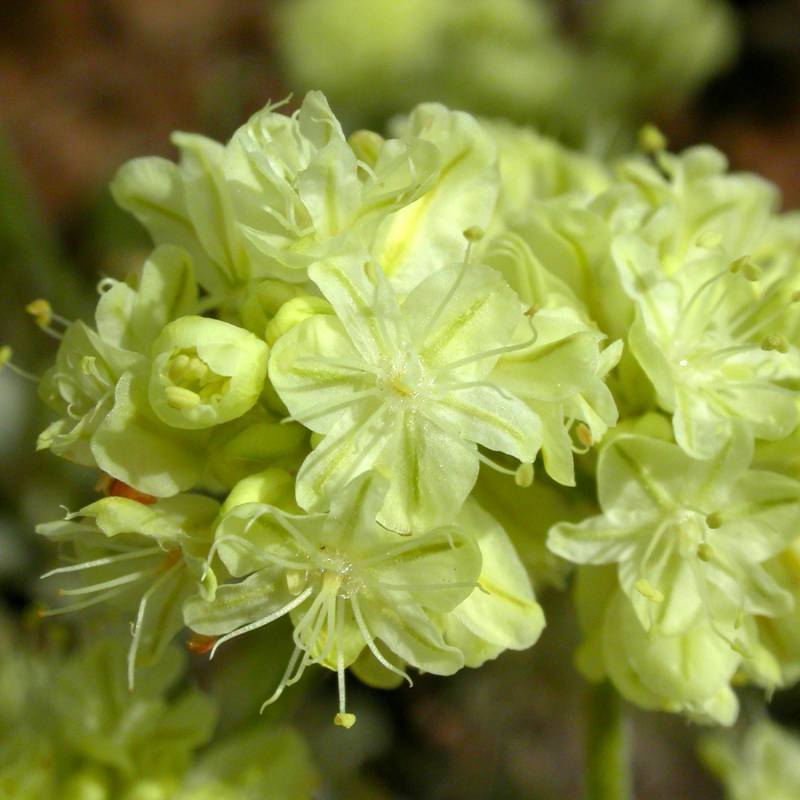Eriogonum flavum
Eriogonum strictum
yellow buckwheat
strict buckwheat
Basal, closely crowded, usually more or less gray-woolly, especially below, linear to narrowly oblanceolate, 3-7 cm. long with a petiole about the same length.
Mostly basal, the blades elliptic to ovate, 5-25 mm. long, usually white-woolly on the lower surface and less so on the top, on petioles as long to 4 times as along as the blades.
Flowering stems leafless, 5-20 cm. long; inflorescence a simple umbel, rays up to 3 cm. long, subtended by 4-6 somewhat leafy bracts;
involucre covered with soft hairs, cone-shaped, 4-7 mm. long with 4-5 shallow lobes;
tepals 4-6 mm. long, usually pale to deep yellow but sometimes rose-tinged, covered with soft, silky hairs, and with a short, stipitate base.
Flowering stems leafless, the inflorescence from open and freely branched with the involucres single at the branch tips to umbellate and the involucres somewhat clustered; with small, linear bracts at the forks of the branches;
involucres narrowly cup-shaped, with 5 triangular, erect, short teeth;
tepals white or cream to pinkish or yellow, 3-4 mm. long, divided nearly to the non-stipitate base, the segments oblong, the outer twice as broad as the inner.
Eriogonum flavum
Eriogonum strictum
- Local floras:
BC,
OR,
WA
- Local Web sites:
Flora NW,
PNW Herbaria
WildflowerSearch
iNaturalist (observations)
USDA Plants Database
- LBJ Wildflower Center
- SEINet
- Plants of the World Online
- Encyclopedia of Life
- Wikipedia
- Google Image Search



